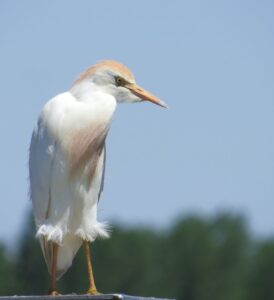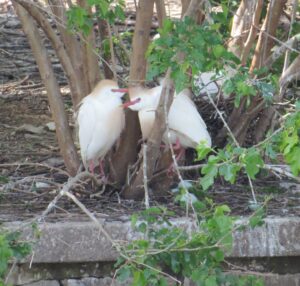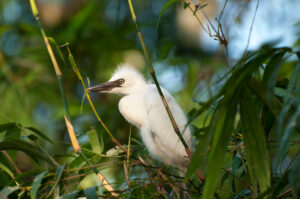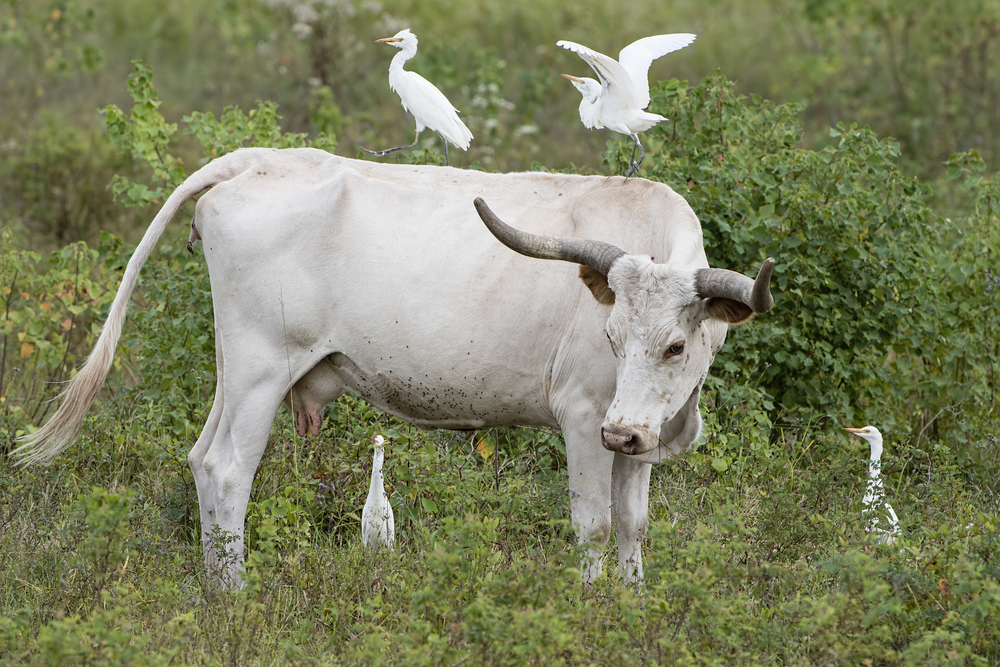Cattle Egret, Bubulcus ibis
Bill Rowe
Missouri is home to over 400 species of birds, nearly all of them native to this continent, along with a handful that were introduced by humans for one reason or another. This week’s bird, however, is unique: during the past 140 years or so, the Cattle Egret introduced itself, first to South America, probably by crossing the Atlantic from Africa, then to North America, first showing up in Florida in the 1940’s and in Missouri by 1955. It has spread widely across the entire New World and has nested in all but four of the lower 48 states. In fact, it also spread more widely in the Old World during the 20th century, adding extensively to its range in Africa, Europe, southeast Asia, and Australia. One explanation for its explosive success is that it is adapted to feeding in grasslands among large animals that stir up its prey, such as (originally) the African buffalo; this has translated into seeking out pastures with cattle and other domestic animals. Besides insects and frogs, it may take all sorts of prey including worms, crustaceans, fish, and small birds or their eggs. Herons, of course, are fundamentally water birds, but the Cattle Egret’s special niche has kept it more on dry land. Nonetheless, it is often seen around the margins of wetlands, and it nests in mixed colonies along with other kinds of herons (Great Egret, Snowy Egret, Little Blue Heron, etc.); these colonies may be in towns and parks as well as out in the countryside. As with other herons, the juveniles may look slightly different from the adults, while the adults may show unusually vibrant colors on their legs, bills, and facial skin for a brief period during mating and nesting (see photo below, right).
IDENTIFICATION: Cattle Egrets are fairly small, stocky herons, shorter-legged than Snowy Egrets or immature Little Blue Herons (the other small white ones). Their short yellow bills, with chin feathers protruding in a sort of “jowl,” give them an unmistakable profile. They are mostly white, but adults have patches of buff or caramel-color on the head, breast, and lower back, especially during the breeding season; their bills are yellow most of the year, and their legs vary from yellow to blackish. In juveniles, the bill is black for a while too.
ST. LOUIS STATUS: Somewhat uncommon, less numerous than in southeastern Missouri, but can show up unpredictably almost anywhere in the warmer months, April-October. Occasionally found nesting here, as in recent colonies in St. Louis City.
Learn more and listen to the calls of Cattle Egrets here.



Adult in spring
Photo Credit: Bill Rowe
Adults near nest,
with special breeding colors
Photo Credit: Bill Rowe
Juvenile




